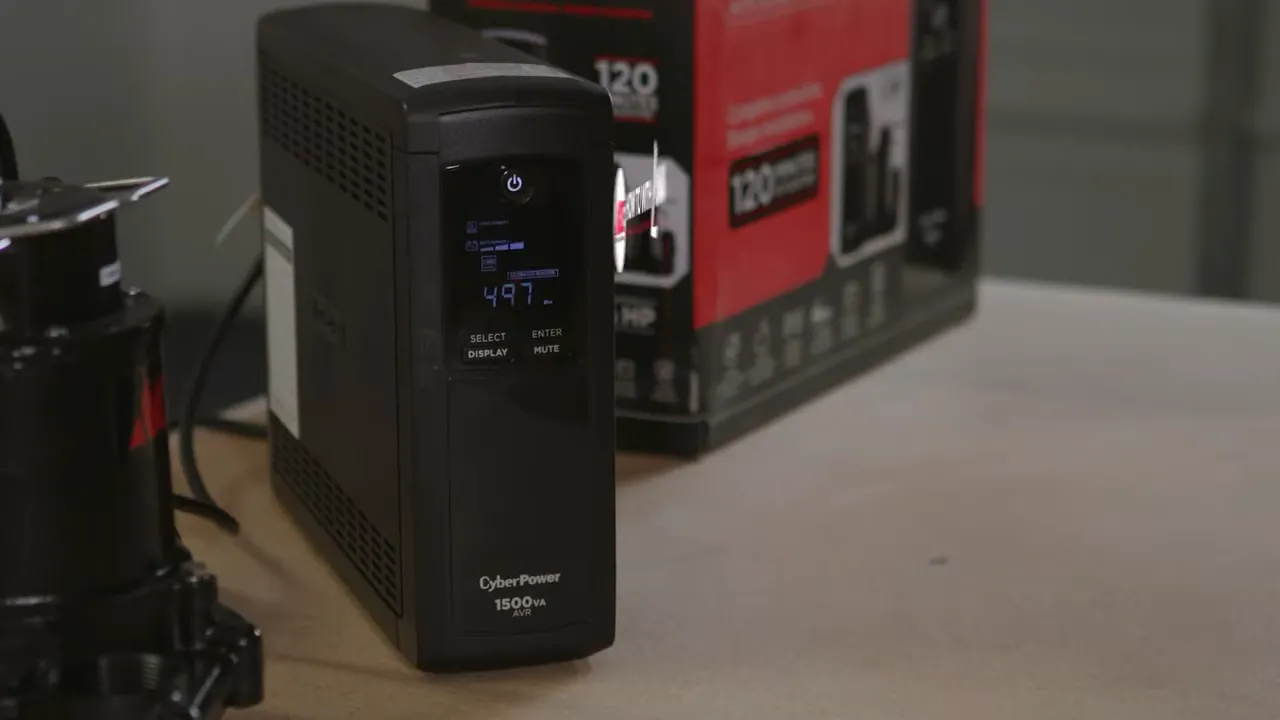To install battery backup for a sump pump, follow these steps: connect the battery to the backup pump, ensure the battery is fully charged. A battery backup for a sump pump is a crucial addition to prevent basement flooding during power outages.
When heavy storms and hurricanes hit, power disruptions are common, leaving the main sump pump unable to function. This backup system ensures continuous protection, providing peace of mind. Installing a battery backup is a simple process and requires connecting the battery to the backup pump and ensuring the battery is fully charged.
It is essential to follow the manufacturer’s instructions carefully to guarantee efficient performance. We will detail the step-by-step process for installing a battery backup for a sump pump to keep your basement dry and protected.
Why Use A Battery Backup For Sump Pump?
Installing a battery backup for your sump pump is a crucial step in protecting your home from potential water damage. In the event of a power outage or failure, a battery backup system ensures that your sump pump continues to operate efficiently, keeping your basement or crawl space dry and preventing costly water damage.
Benefits of Using a Battery Backup
Using a battery backup for your sump pump offers numerous benefits that can provide you with peace of mind and protection against unexpected power outages. Let’s take a closer look at some of these advantages:
- Continuous Operation: With a battery backup system, your sump pump will keep functioning even if there is a power outage. This means you won’t have to worry about flooding or water damage during storms or when the electricity goes out.
- Extra Protection: In some cases, the primary sump pump may malfunction or become overwhelmed. In such situations, a battery backup system can step in and ensure that water is still being pumped out, preventing any potential overflow or damage.
- Peace of Mind: Knowing that you have a reliable backup system in place provides peace of mind, especially during severe weather conditions or when you’re away from home for an extended period. You can rest easy knowing that your basement or crawl space will remain dry, even when the power is out.
- Investment Protection: Water damage can lead to costly repairs and property damage. By installing a battery backup for your sump pump, you are safeguarding your investment and potentially saving yourself from expensive repairs in the future.
Importance of Protecting Against Power Outages
Power outages can occur at any time, leaving your sump pump vulnerable and your home at risk of flooding. Here are some reasons why it is important to protect your sump pump against power outages:
- Unpredictable Weather: Storms and severe weather events can cause power outages, leaving your sump pump without electricity and unable to function properly.
- Equipment Malfunction: There is always a chance of equipment failure or electrical issues that can disrupt the power supply to your sump pump. A battery backup acts as a fail-safe, ensuring continuous operation even during such instances.
- No Warning: Power outages often occur unexpectedly, and you may not be at home to manually activate your backup sump pump. A battery backup system eliminates this concern, as it automatically kicks in when the power is lost.
- Protecting Valuables: Basements or crawl spaces often contain valuable possessions, such as electronics, furniture, or family heirlooms. Preventing flooding and water damage with a battery backup system ensures the safety of these valuables.
Installing a battery backup system for your sump pump is a wise decision that can protect your home from water damage and give you peace of mind. By doing so, you are investing in the long-term security and well-being of your property.
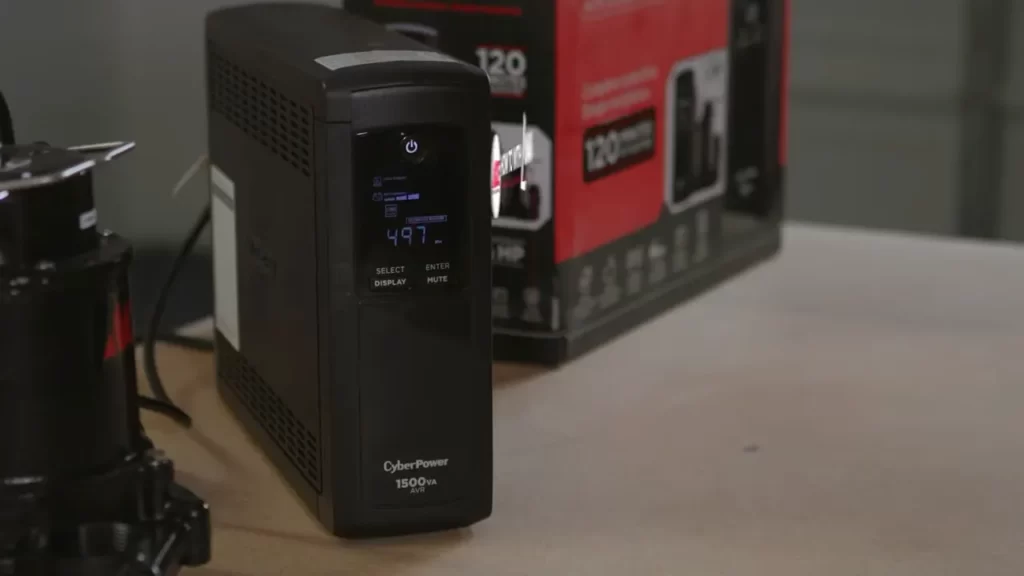
Choosing The Right Battery Backup System
When it comes to protecting your basement against flooding, installing a battery backup system for your sump pump is a wise decision. Power outages during heavy storms and natural disasters can render your primary sump pump useless, leaving your basement vulnerable to water damage. But how do you choose the right battery backup system for your needs? Here are some factors to consider:
Factors to consider when selecting a battery backup system
1. Capacity and runtime requirements:
The capacity and runtime of a battery backup system determine how long it can power your sump pump during a power outage. It is important to assess your specific needs, taking into account factors such as the size of your basement, the water table in your area, and the frequency of power outages in your area. Manufacturers typically provide a capacity rating for their battery backup systems, which indicates how much power the system can provide. Additionally, the runtime of a system refers to how long it can sustain power to your sump pump. Consider these factors when selecting a battery backup system.
2. Battery type and maintenance:
There are different types of batteries used in battery backup systems, including sealed lead-acid batteries and lithium-ion batteries. Each type has its own advantages and disadvantages. Sealed lead-acid batteries are typically more affordable but require regular maintenance, such as checking the electrolyte levels and ensuring proper ventilation. On the other hand, lithium-ion batteries are maintenance-free but come with a higher price tag. Consider your budget and maintenance preferences when choosing the battery type for your backup system.
3. Ease of installation and integration:
Installing a battery backup system should be a straightforward process, but it is important to choose a system that integrates easily with your existing sump pump setup. Look for a system that comes with clear installation instructions and all the necessary components for seamless integration. Some systems may require professional installation, so be sure to factor in any additional costs or expertise required.
| Factors to consider when selecting a battery backup system: |
|---|
| Capacity and runtime requirements |
| Battery type and maintenance |
| Ease of installation and integration |
- Assess your specific needs
- Consider capacity rating and runtime of the system
- Choose a battery type that fits your budget and maintenance preferences
- Ensure easy installation and integration with your existing setup
By considering these factors, you can choose a battery backup system for your sump pump that provides reliable protection against basement flooding during power outages. Don’t leave your basement vulnerable to water damage – invest in a battery backup system today!
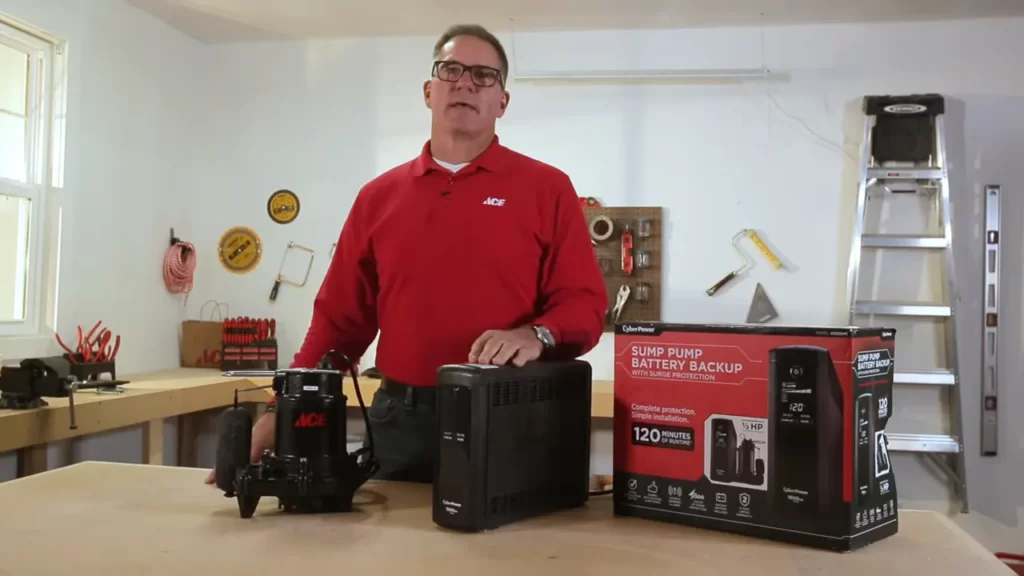
Installation Process Of Battery Backup For Sump Pump
Installing a battery backup system for your sump pump is an essential step in safeguarding your basement against water damage during power outages. With a reliable backup system in place, you can rest easy knowing that your sump pump will continue to function even when the electrical power is disrupted. In this post, we will walk you through the step-by-step installation process of a battery backup system for your sump pump.
Step-by-step instructions for installing the battery backup system
- Begin by gathering all the necessary tools and materials for the installation. Having everything prepared beforehand will save you time and ensure a smooth installation process.
- Locate the sump pump and identify a suitable location for the battery backup system. This location should be close to the sump pump and have easy access to an electrical outlet for charging.
- Install the battery box. Mount the battery box securely to the wall or floor using the appropriate screws and anchors. Make sure it is positioned in a well-ventilated area and is protected from any potential water damage.
- Connect the battery cables to the battery terminals. Follow the manufacturer’s instructions carefully to ensure proper connection and avoid any damage to the battery or the backup system.
- Connect the battery backup system to the existing sump pump. Use the provided connectors and wires to establish a secure connection between the backup system and the sump pump. Double-check all connections to ensure they are tight and secure.
- Test the battery backup system. Fill the sump pit with water to activate the backup system and ensure it kicks in properly. Monitor the system’s performance and make any necessary adjustments.
- Charge the battery. Connect the battery backup system to an electrical outlet and allow it to charge fully. This step is crucial as it ensures the battery is ready to provide reliable backup power when needed.
- Perform regular maintenance checks. Regularly inspect the battery backup system to ensure it is in good working condition. Replace the battery as recommended by the manufacturer to ensure the reliability of the backup system.
Required tools and materials for the installation
Here is a list of tools and materials you will need for installing a battery backup system for your sump pump:
| Tools | Materials |
|---|---|
| Screwdriver | Battery backup system |
| Drill | Battery cables |
| Screws and anchors | Connectors and wires |
| Electrical tape | Battery |
Safety precautions to follow during the installation process
When installing a battery backup system for your sump pump, it is important to prioritize safety. Follow these safety precautions to ensure a secure and risk-free installation:
- Before starting the installation, disconnect the sump pump from the power source to prevent any accidental electrical shocks.
- Avoid working with wet hands or in wet areas. Ensure the work area is dry and free from any water sources to minimize the risk of electrical accidents.
- Read and understand the manufacturer’s instructions thoroughly before starting the installation process. Adhere to all safety guidelines and recommendations provided.
- If you are unsure about any step or encounter any difficulties during the installation, consult a professional electrician or plumber to ensure the proper and safe installation of the battery backup system.
- Dispose of old batteries properly in accordance with local regulations. Battery components can be hazardous if not handled and disposed of correctly.
By following these step-by-step instructions, using the necessary tools and materials, and prioritizing safety precautions, you can successfully install a battery backup system for your sump pump. Don’t let power outages compromise the protection of your basement anymore – take proactive measures to ensure your sump pump keeps working efficiently even during emergencies.
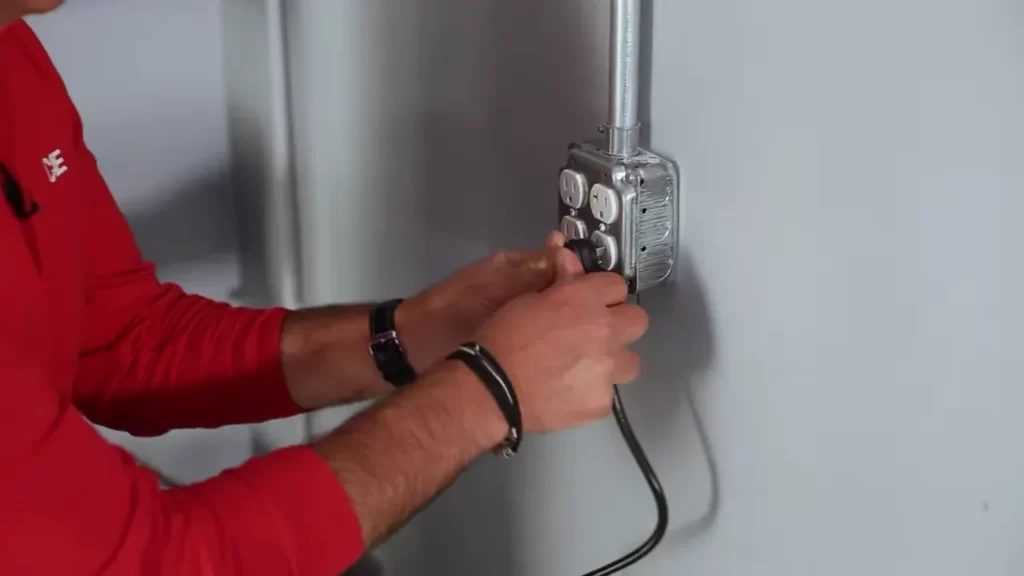
Evaluating Existing Sump Pump Setup
Before installing a battery backup system for your sump pump, it is crucial to evaluate the current sump pump setup to ensure compatibility and proper functionality. Taking the time to evaluate this setup will help you determine whether your primary sump pump is suitable for a battery backup system and whether any modifications or upgrades are needed.
Examining the current sump pump setup for compatibility with a battery backup system
When evaluating your current sump pump setup, you need to assess its compatibility with a battery backup system. Here are a few aspects to consider:
- Power source: Check whether your primary sump pump is connected to a dedicated electrical circuit or if it’s plugged into a regular outlet. A dedicated circuit is required for a battery backup system.
- Wiring: Examine the wiring of your current sump pump. Ensure that it meets the necessary electrical requirements for a battery backup system, such as sufficient gauge size and grounded connections.
- Pump capacity: Assess the pumping capacity of your current sump pump. The battery backup system should have the capability to handle the same amount of water, or more, depending on your needs.
- Location: Evaluate the location of your sump pump to determine if it provides sufficient space for installing a battery backup system.
Ensuring proper functionality of the primary sump pump
Before adding a battery backup system, it is essential to ensure that your primary sump pump is functioning correctly. Here are some steps to take:
- Inspect the pump: Carefully inspect the primary sump pump for any visible damage or signs of wear and tear. Pay attention to the motor, impeller, and float switch, ensuring that they are clean and in good working condition.
- Testing the pump: Perform a pump test by pouring water into the sump pit and monitoring the pump’s operation. Make sure it pumps out the water effectively and that the float switch activates and deactivates the pump as intended.
- Replacing worn parts: If you notice any deficiencies during the inspection or testing, it is advisable to replace any worn or damaged parts of the primary sump pump before installing a battery backup system.
- Maintaining regular maintenance: To ensure the primary sump pump continues to function optimally, establish a routine maintenance schedule which includes cleaning, lubrication, and periodic checks for debris build-up in the sump pit.
By thoroughly examining the current sump pump setup for compatibility with a battery backup system and confirming the proper functionality of the primary sump pump, you can proceed with confidence to the next step of installing a battery backup for your sump pump.
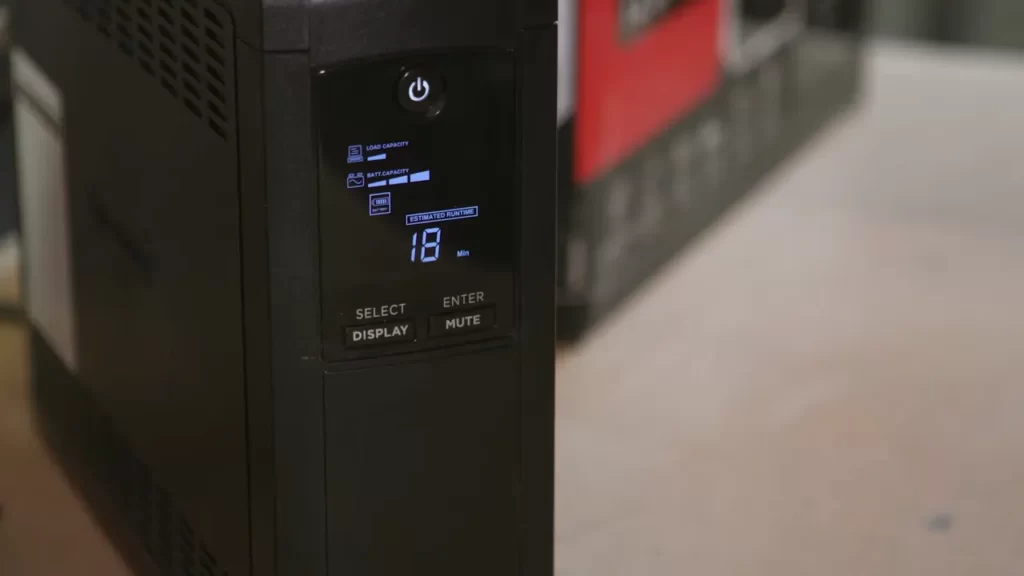
Installing The Battery Backup Unit
When it comes to protecting your basement from flooding, a sump pump is an essential tool. But what happens when the power goes out? That’s where a battery backup for your sump pump comes in. Installing a battery backup unit can give you peace of mind knowing that your pump will continue to function even during a power outage. In this article, we will guide you through the process of installing a battery backup unit for your sump pump.
Mounting the battery backup unit in a suitable location
The first step in installing your battery backup unit is to find a suitable location for it. The battery backup unit should be installed in a dry, well-ventilated area close to your sump pump. Make sure the location is easily accessible so you can maintain and service the battery backup unit when needed.
Here are a few things to consider when choosing a location:
- Ensure that the location is away from direct sunlight and extreme temperatures, as this can affect the performance of the battery.
- Choose a location that is easy to access for maintenance and monitoring purposes.
- Make sure the location is sturdy enough to support the weight of the battery backup unit.
- Check for any obstructions or obstacles that could interfere with the operation of the unit.
Once you have found a suitable location, securely mount the battery backup unit using the mounting brackets provided. Ensure that it is level and stable.
Connecting the battery backup to the sump pump system
Now that you have mounted the battery backup unit, it’s time to connect it to your sump pump system. The following steps will guide you through the process:
- Ensure that the sump pump and the battery backup unit are both switched off before starting the installation.
- Locate the discharge pipe coming out of your sump pump and cut it using a PVC cutter. Make sure to leave enough length to connect the battery backup unit.
- Attach a PVC coupling to the end of the discharge pipe on the sump pump.
- Connect a check valve to the other end of the coupling.
- Take the PVC extension pipe provided with the battery backup unit and connect it to the check valve.
- Attach the other end of the extension pipe to the discharge port on the battery backup unit.
- Ensure that all connections are tight and secure using PVC cement or pipe clamps.
Once you have connected the battery backup unit to the sump pump system, double-check all the connections and make sure they are secure. It’s also essential to test the system to ensure that it functions correctly. Fill the sump pit with water and manually trigger the float switch to activate the sump pump. The battery backup unit should kick in automatically, providing power to the pump.
Installing a battery backup unit for your sump pump is a wise investment to keep your basement dry and protected during power outages. By following these steps, you can ensure a proper installation that will provide you with peace of mind knowing that your sump pump will continue to operate even when the lights go out.
Testing And Maintenance
In order to ensure that your battery backup for sump pump will function properly when you need it most, regular testing and maintenance are essential. By conducting regular tests, you can identify any issues with the backup system and address them promptly. Additionally, performing routine maintenance tasks will help prolong the lifespan of the battery backup, ensuring it remains reliable and effective for years to come.
Conducting regular testing to ensure the battery backup functions properly
Regular testing of your battery backup system is crucial to verify that it will work as intended during a power outage or pump failure. By following these simple steps, you can conduct accurate tests and gain peace of mind:
- First, locate the test button or switch on your battery backup unit.
- Ensure that the main power supply to the sump pump is disconnected.
- Press the test button or switch to activate the battery backup system.
- Listen for the sound of your sump pump turning on and running. You may also want to visually inspect the pump to ensure it is functioning correctly.
- If the backup system activates and the sump pump operates as expected, you can be confident that it is functioning properly.
- If the backup system fails to activate or the sump pump does not run, there may be an issue with either the battery or the backup unit itself. Consult the manufacturer’s instructions or contact a professional for further assistance.
Performing routine maintenance tasks to prolong the lifespan of the battery backup
To ensure that your battery backup for sump pump remains in optimal condition and continues to provide reliable performance, regular maintenance tasks should be carried out. These tasks are simple and can significantly prolong the lifespan of your backup system:
- Inspect the battery backup unit for any signs of physical damage, such as cracks or leaks. If any issues are detected, contact a professional for repair or replacement.
- Clean the battery terminals and connectors to remove any dirt or corrosion that may hinder proper functionality. Use a soft cloth or brush to gently clean the terminals and connectors.
- Ensure that the battery is securely connected and properly aligned in the backup system. Loose connections can lead to a loss of power during an outage.
- Regularly check the battery’s charge level and ensure it is within the manufacturer’s recommended range. If necessary, recharge the battery to maintain optimal performance.
- Keep the battery backup unit and its surroundings clean and free from debris. This will prevent any obstructions that may interfere with the proper operation of the system.
By following these testing and maintenance tips, you can have confidence in the reliability of your battery backup for sump pump. Remember to consult the manufacturer’s instructions and guidelines for specific recommendations related to your backup system, as different models may have unique requirements.
Troubleshooting Common Issues
Having a battery backup system for your sump pump is crucial to ensure your basement remains protected from flooding, especially during power outages. However, like any other electrical system, battery backup systems can encounter common issues that require troubleshooting. In this section, we will discuss how to identify and resolve these common problems, allowing you to have peace of mind knowing your sump pump will continue to work efficiently when you need it the most.
Identifying and resolving common problems with battery backup systems
Even the most reliable battery backup systems can occasionally encounter issues. It’s important to understand how to identify and resolve these common problems to ensure the effectiveness of your sump pump. Below are some troubleshooting steps you can follow:
Troubleshooting power supply and connection issues
Power supply and connection issues are some of the common problems you may encounter with your battery backup system. To troubleshoot these issues, follow these steps:
- Check the power source: Ensure that the battery is fully charged and connected to a reliable power source. If the battery is not charging, it may indicate a faulty charger or power outlet.
- Inspect the connections: Examine the connections between the battery, charger, and pump to ensure they are secure and properly connected. Loose or damaged connections can interfere with the power supply.
- Test the battery: Use a voltmeter to test the battery’s voltage. If the voltage is significantly lower than the rated output, it may indicate a faulty battery that needs to be replaced.
- Reset the system: Sometimes, resetting the battery backup system can resolve power supply and connection issues. Refer to your system’s manual for instructions on how to reset it.
If you have tried these troubleshooting steps but are still experiencing power supply and connection issues with your battery backup system, it is recommended to consult a professional technician for further assistance. They can provide specialized knowledge and expertise to diagnose and resolve the problem effectively.
Frequently Asked Questions
When it comes to installing a battery backup for your sump pump, you may have some questions about the process. We are here to address those common queries and provide you with expert solutions. Read on to find answers to some frequently asked questions.
Question 1: What is the purpose of a battery backup for a sump pump?
A battery backup system for your sump pump is designed to provide you with peace of mind during power outages or instances when the primary pump fails. It ensures that your basement remains protected from flooding, even when there is no electricity supply. The backup pump is activated automatically and keeps your sump pit clear of water, preventing any potential damage.
Question 2: How does a battery backup system work?
A battery backup system typically consists of a secondary sump pump connected to a battery-powered unit. When the power goes out or the primary pump fails, the backup pump is activated, pumping water out of the sump pit. The battery provides the necessary power to keep the backup pump running until the main power supply is restored.
Question 3: Can I install a battery backup system myself?
Installing a battery backup system for your sump pump is not overly complex, and many homeowners choose to do it themselves. However, it is important to ensure that you have a good understanding of electrical connections and plumbing. If you are not confident in your abilities, it is recommended to hire a professional for the installation to avoid any potential issues.
Question 4: How long do battery backup systems typically last?
The lifespan of a battery backup system can vary depending on the quality of the components and the usage. On average, a battery backup system can last anywhere from 3 to 5 years. It is important to regularly inspect and maintain your battery backup system to ensure its longevity.
Question 5: How often should the battery be replaced?
The battery in a battery backup system should typically be replaced every 3 to 5 years, depending on the manufacturer’s recommendations. It is important to follow the specific guidelines provided by the manufacturer to ensure optimal performance of your battery backup system.
Question 6: Are there any maintenance requirements for a battery backup system?
Maintaining your battery backup system is crucial to ensure its reliability. Regularly inspecting the battery and its connections, as well as testing the system, are essential maintenance tasks. It is also important to keep the battery clean and free of debris. Consult the manufacturer’s instructions for specific maintenance guidelines.
Question 7: Can a battery backup system be installed on an existing sump pump?
Yes, a battery backup system can be installed on an existing sump pump. The installation process may vary depending on the design of your sump pump system. It is recommended to consult the manufacturer’s instructions or seek professional assistance to ensure proper installation.
Question 8: How much does a battery backup system cost?
The cost of a battery backup system for your sump pump can vary depending on the brand, features, and additional components. On average, a basic battery backup system can cost anywhere from $300 to $600. It is recommended to research different options and consider your specific needs before making a purchase.
With these frequently asked questions addressed, you should have a better understanding of battery backup installation for sump pumps. Installing a reliable battery backup system will provide you with the peace of mind knowing that your sump pump will continue to protect your basement even during power outages or pump failures.
Frequently Asked Questions
Can You Add A Battery Backup To An Existing Sump Pump?
Yes, it is possible to add a battery backup to an existing sump pump. This backup system will ensure that your sump pump continues to operate during power outages, providing additional protection against basement flooding.
How Much Does It Cost To Add A Battery Backup To An Existing Sump Pump?
Adding a battery backup to an existing sump pump typically costs between $500 and $1,000.
Are Battery Backup Sump Pumps Worth It?
Battery backup sump pumps are worth it. They offer protection during power outages and prevent basement flooding. With their reliable backup system, they ensure continuous operation, providing peace of mind. Installing one can help avoid costly water damage and protect your belongings.
What Kind Of Battery Backup Do I Need For A Sump Pump?
You’ll need a battery backup for your sump pump that can provide enough power to keep it running during a power outage.
Conclusion
Installing a battery backup for your sump pump is a smart and practical decision to ensure the safety of your home during power outages. By following the steps outlined in this guide, you can protect your basement from flooding and avoid expensive repairs.
Remember to choose a reliable battery that can provide sufficient power and consider hiring a professional if you are uncertain about the installation process. Stay prepared and keep your sump pump running smoothly, even when the lights go out.
